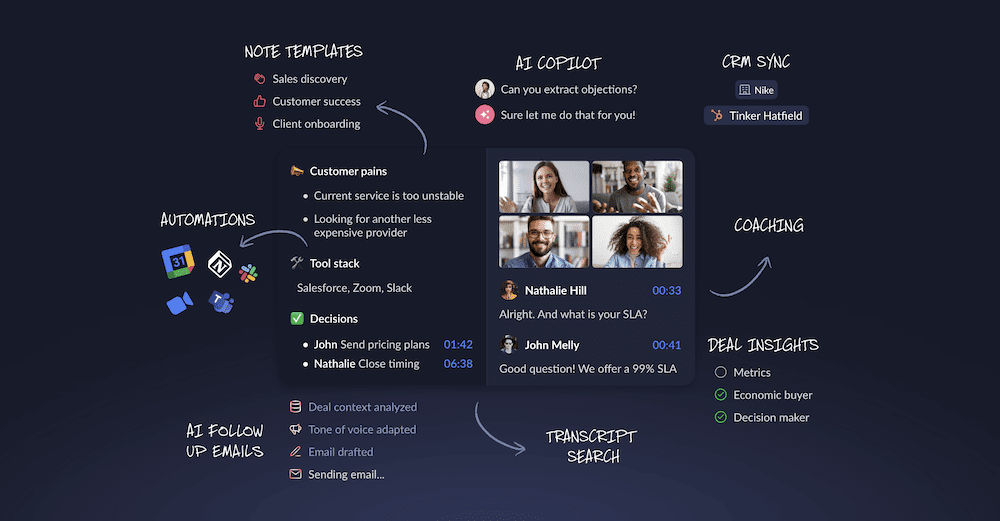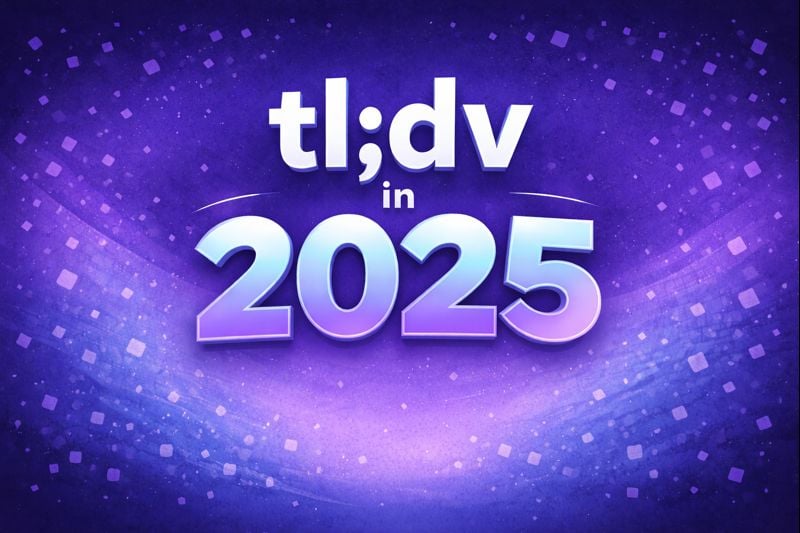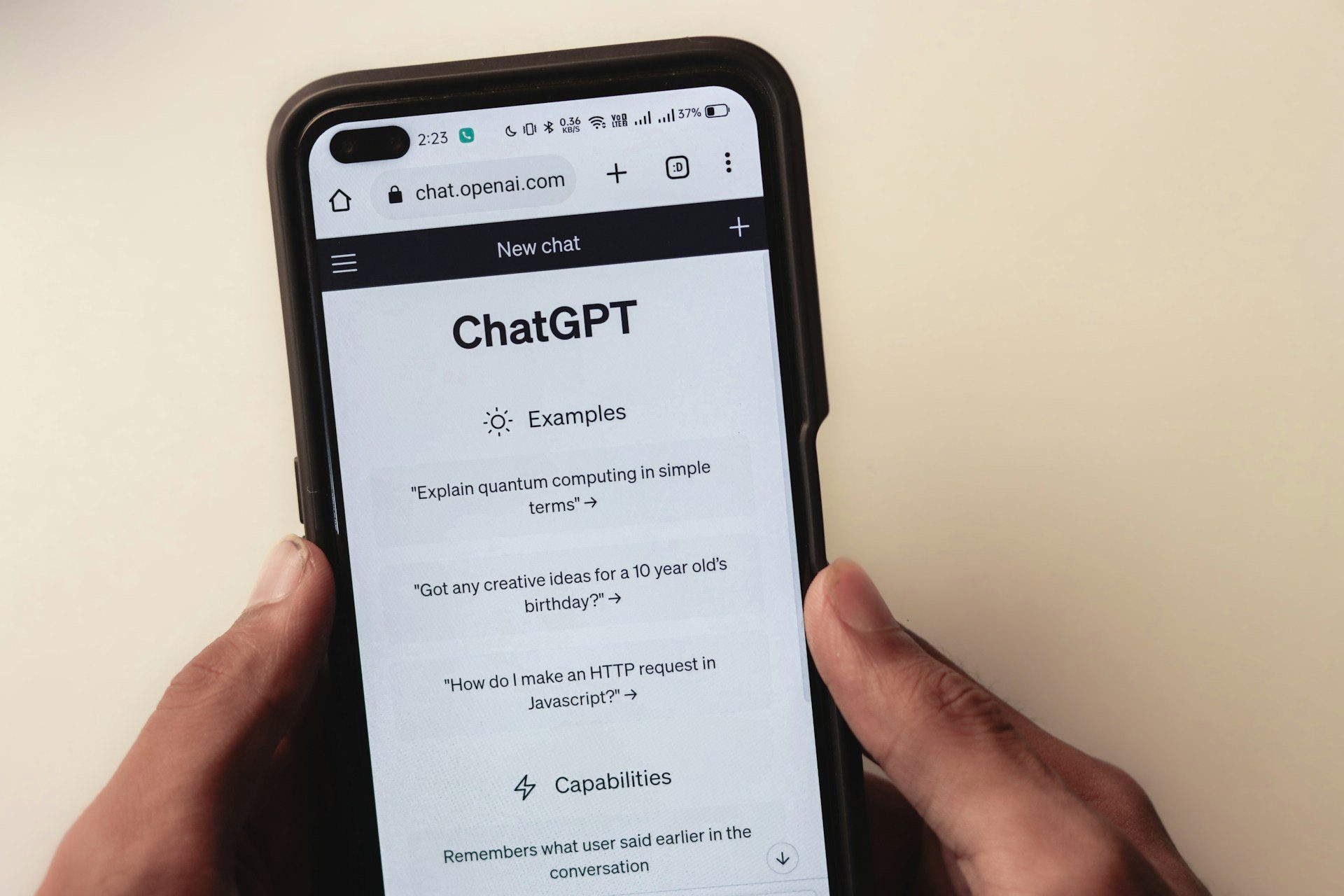With a name that sounds like it’s either applauding itself or falling over, Claap enters the crowded space of collaboration apps, offering recording, transcription, and AI-powered summaries to help teams avoid drowning in endless Zooms.
But does it really deliver, or is it just another way to turn “meeting overload” into “tool overload”?
The pitch is simple: Claap is here to make meetings shorter. Claap offers to record every painful detail, transcribe it for posterity, and then summarize it so you don’t have to actually engage. Convenient? Sure. We love this idea and it’s what we’re all about here at tl;dv. But does Claap do it a way that offers the best experience for all, with the right tools and features that will really help?
In this review, we’ll take an honest look at what Claap does well and where it falls flat, while also exploring some alternative tools for those who might not be sold on the whole Claap concept.
If you’re wondering whether Claap is the answer to your productivity prayers or just a fancy way to repackage inefficiency, keep reading. It’s time to clap back at Claap.

What Is Claap?
Claap is an AI-powered collaboration tool aimed at reducing the burden of live meetings while keeping teams connected. It offers features like meeting recording, automated transcription in over 99 languages, and AI-generated summaries tailored to specific meeting types. It prides itself as being the “best” AI sales agent, although the metrics this are based on are… vague.
Unlike some alternatives, Claap integrates with platforms like Slack and Notion, making it easy to share key points without forcing everyone into the same room—or virtual call.
Its purpose is clear: to streamline communication and give teams the flexibility to collaborate asynchronously. Claap’s allegedly unique approach focuses on cutting out inefficiencies, whether by recording meetings for later review or by replacing meetings entirely with video updates and screen recordings. It positions itself as a solution for teams that need to stay aligned but don’t want to spend hours hashing things out in real-time.
The platform is particularly popular among industries where time is money. Sales teams use it to automate post-meeting tasks and analyze deal outcomes. Product managers and designers find it helpful for demo feedback and user research. Even HR teams turn to Claap for onboarding and training materials. Whether you’re running a fast-paced startup or trying to reduce meeting fatigue in a larger organization, Claap aims to deliver a smoother, more efficient workflow.
While its features are undeniably useful, Claap’s real appeal is its promise to transform meetings from a necessary evil into something far more productive—or, in some cases, unnecessary altogether. Whether it truly succeeds depends on the needs of the teams using it.
What Are the Key Features of Claap?
Claap positions itself as a comprehensive tool for enhancing team collaboration and minimizing time spent in meetings. Its key features are designed to address common pain points in modern workflows, offering solutions that aim to simplify communication and increase efficiency. Here’s a breakdown of Claap’s standout functionalities and how they compare to competitors:
Meeting Recording
Claap allows users to record meetings seamlessly on platforms like Zoom and Google Meet without the need for an intrusive bot joining the call. These recordings can be revisited anytime, ensuring nothing important slips through the cracks.
What makes it stand out? Unlike some competitors, Claap integrates recording into its broader collaboration suite, reducing the need for multiple apps.
Automated Transcription
Claap generates transcriptions in over 99 languages, making it accessible for global teams. The transcriptions are detailed and timestamped, ensuring easy navigation and clarity.
Compared to others: While tools like Otter.ai specialize in transcription, Claap combines this feature with other collaboration functionalities, creating a more streamlined experience.
AI-Powered Summaries
Claap uses artificial intelligence to create concise summaries of meetings, tailored to specific use cases like sales calls, product reviews, or team updates. These summaries are customizable to ensure relevance.
Competitor comparison: Claap’s summaries are more context-aware than generic notes generated by competitors, making them particularly valuable for time-strapped users.
Screen Recording and Editing
With its Chrome extension and desktop app, Claap enables users to record their screens or cameras to create quick video updates or presentations. Basic editing tools allow for trimming and highlighting, keeping content professional and concise.
Why it matters: This feature makes Claap versatile, serving not only as a meeting tool but also as a resource for asynchronous updates.
Collaboration Features
Claap includes tools for commenting, adding video replies, and using emojis for feedback. These features allow teams to have ongoing discussions without the need for additional meetings.
Unique value: This functionality transforms recordings from passive files into interactive collaboration hubs.
Integrations with Popular Tools
Claap connects seamlessly with platforms like Slack, Notion, and Google Workspace, ensuring your team’s workflows remain connected and efficient.
Competitor edge: Its integrations are on par with those of tools like Loom but with added functionality for managing meeting-specific tasks.
Secure Video Workspace
Claap provides a centralized space to store and organize video content with advanced privacy controls. It complies with EU and US data privacy regulations, making it a secure option for sensitive information.
Standout factor: This security focus sets Claap apart in industries where confidentiality is critical.

What are the Feedback and Reviews for Claap?
Claap has garnered attention for its AI-driven approach to streamlining meetings and enhancing team collaboration. User feedback across various platforms provides valuable insights into its performance and areas for improvement.
User Feedback
On G2, Claap holds a commendable rating of 4.8 out of 5 stars, indicating a generally positive reception. Users frequently praise its ease of use and the quality of its recording and transcription features. For instance, a project manager from a small business remarked, “I find its interface so intuitive I was up and running in minutes.”
Another user, a growth specialist in the computer software industry, highlighted the tool’s efficiency: “Claap’s meeting recording is easy to use and the meeting transcription is very accurate.” (G2)
However, some users have pointed out areas where Claap could improve. Common concerns include occasional recording issues and limitations in integrations. One user noted challenges with recording functionality, stating, “Recording Issues.” (G2)
Expert Insights
While specific expert reviews are limited, Claap’s innovative approach to automating post-meeting tasks has been recognized in industry discussions. Its ability to integrate AI for meeting notes, follow-up emails, and CRM enrichment positions it as a forward-thinking solution in the collaboration tools market.
Overall Trends in Feedback
Users appreciate Claap’s intuitive interface and the quality of its core features, such as recording and transcription. The platform’s design facilitates quick onboarding and effective team communication. However, some users have experienced technical issues, particularly with recording functionalities and integration capabilities.
What Users Love
- Ease of Use: The platform’s user-friendly design allows for quick adoption without extensive training.
- High-Quality Recording and Transcription: Users value the clarity and accuracy of recordings and transcriptions, which enhance meeting documentation.
Areas for Improvement
- Recording Stability: Some users have reported occasional issues with recording, suggesting a need for enhanced reliability.
- Integration Expansion: Enhancing integration capabilities with other tools could provide a more seamless user experience.
How Much Does Claap Cost?
Claap offers a flexible pricing structure designed to meet the needs of various users, from individual contributors to large enterprise teams. Here’s a breakdown of their plans:
Free Plan
- Basic License: Free
- Features:
- 10 videos per user
- 300 minutes of recording
- Key features like Calendar & Conf Call Sync, 99-language Transcript, Basic AI Summary, Chrome Recorder Extension, and Collaborative Workspace
Paid Plans
- PRO License
- Cost: €24 per license per month (€30 if billed monthly).
- Features: Unlimited recordings with 1000 minutes per month, advanced AI-powered tools, including Advanced AI Summary, Custom Prompts, AI-powered Video Editing, 10+ integrations, Speaker & Video Insights, Advanced Collaboration, and Private Channels & Videos.
- Business License
- Cost: €48 per license per month (€60 if billed monthly).
- Features: Unlimited recordings and recording time, 2-way CRM integration, AI-Generated Emails, AI Coaching, Deal Insights & Meddic Scorer, AI Copilot, admin recording & sharing control, and priority support.
- Enterprise License
- Cost: Custom pricing (billed yearly).
- Features: Includes everything in the Business plan plus SSO, User Provisioning (SCIM), unlimited video clip licenses, unlimited Basic licenses, white-glove onboarding, and migration support.
Key Features Across Plans
- AI-Powered Tools: Advanced AI Summary, transcription, and meeting insights tailored to each plan.
- Video Editing: AI-powered video editing, stitching, and customization options for enhanced presentations.
- Collaboration: Features such as video annotations, polls, advanced collaboration tools, and analytics for efficient teamwork.
- Integrations: Seamless integration with tools like Google Meet, Teams, Zoom, Slack, Salesforce, and more.
For more detailed information, visit Claap’s pricing page.

What Are the Drawbacks and Limitations of Claap?
While Claap offers an impressive suite of features, it has its limitations. Understanding these can help users determine if the tool aligns with their needs or if other options might be more suitable.
1. Occasional Technical Issues
Some users have reported glitches in the recording feature, such as dropped recordings or delays in starting. This can disrupt workflows, especially for teams that rely heavily on capturing critical meetings. While updates may address these issues, it’s worth considering how they could impact efficiency in the short term.
2. Restricted Integrations
Claap integrates with popular tools like Slack and Notion, but its integration capabilities are not as extensive as some other platforms. For teams using niche or highly specific tools, this could limit seamless adoption and require manual workarounds.
3. Limited Features in Free Plan
The free plan is a good entry point but comes with significant restrictions, such as caps on recording minutes and storage duration. For teams with higher usage requirements, upgrading to a paid plan quickly becomes necessary, potentially making the free option feel more like a trial.
4. Focus on Asynchronous Workflows
Claap’s emphasis on asynchronous updates and reviews is valuable for teams working across time zones but may not suit teams that prioritize real-time collaboration. In fast-paced environments requiring immediate decision-making, this approach could slow down productivity.
5. Lack of Advanced Features for Collaboration and Search
While Claap offers solid AI-powered tools, some users might find it lacks certain advanced capabilities for meeting management, such as granular search within recordings, automatic follow-ups, or other features that enhance collaboration and decision-making. This could be a drawback for users seeking highly comprehensive solutions.
6. Cost vs. Value for Small Teams
For smaller teams or those with minimal meeting needs, the cost of premium plans may not align with the perceived value, especially if other tools already address specific requirements like transcription or meeting summaries.
Who Should Consider Alternatives?
- Teams with Complex Integration Needs: If your team heavily relies on tools that Claap doesn’t support, the lack of integrations might disrupt your workflow.
- Real-Time Collaboration Teams: For those needing immediate feedback and quick decisions, the asynchronous model could be a limitation.
- Small Teams with Budget Constraints: The free plan’s limitations and premium pricing may not provide sufficient value for teams with minimal usage.
5 Alternatives to Claap
If Claap doesn’t fully meet your needs, several alternative tools offer similar or enhanced features. Among these, tl;dv stands out as a leading option for teams looking to streamline their meeting processes with advanced AI features and seamless integrations. Here are five alternatives to consider:
1. tl;dv
- Best For: Teams seeking efficient meeting recording and transcription with AI capabilities.
- What Makes It Stand Out: tl;dv specializes in recording and transcribing meetings across platforms like Zoom, Google Meet, and Microsoft Teams. It offers AI-generated summaries, speaker recognition, and integrates seamlessly with tools such as Slack, Notion, and various CRMs. Notably, tl;dv provides unlimited recordings and transcriptions in its generous free plan, with support for over 30 languages.
- Strengths: User-friendly interface, high-quality transcriptions, AI features like keyword tagging, and affordable pricing.
- Pricing: Free plan available; Pro plans start at $20/month.
2. Loom
- Best For: Asynchronous video communication and screen recordings.
- What Makes It Stand Out: Loom simplifies asynchronous communication by enabling users to create and share video messages, presentations, and tutorials. Its fast sharing options and visual annotations make it ideal for delivering updates without scheduling live meetings.
- Key Features: Screen recording with webcam overlays, simple editing tools, and video hosting with detailed analytics. Loom integrates with popular tools like Slack, Gmail, and Trello to keep communication streamlined.
- Pricing: Free plan available; Business plans start at $12.50/month per user.
For more insights, read our Loom Alternatives article.
3. Otter.ai
- Best For: Advanced transcription and meeting documentation.
- What Makes It Stand Out: Otter.ai generates real-time and post-meeting transcriptions with high accuracy. It integrates with platforms like Zoom, Google Meet, and Microsoft Teams, offering features such as live captions, collaborative note-taking, and speaker identification.
- Key Features: Accurate transcription, live captions during meetings, and powerful search functionality.
- Pricing: Free plan available; Premium plans start at $8.33/month.
For a detailed comparison, see our tl;dv vs Otter.ai article.
4. Gong.io
- Best For: Sales teams needing detailed insights and analytics from calls.
- What Makes It Stand Out: Gong.io is designed for sales teams, offering advanced analytics, conversation intelligence, and CRM integration. It records and transcribes meetings, analyzing sales performance to provide actionable insights, such as deal progress and team performance metrics.
- Key Features: AI-driven insights, sales-specific analytics, and CRM integrations.
- Pricing: Custom pricing; typically starts at a higher tier compared to other tools.
For more information, read our tl;dv vs Gong.io article.
5. Fireflies.ai
- Best For: Teams seeking AI-powered transcription and meeting insights.
- What Makes It Stand Out: Fireflies.ai offers AI-driven transcription services and meeting insights. It integrates with platforms like Zoom, Google Meet, and Microsoft Teams, providing speaker identification, sentiment analysis, and searchable transcripts.
- Key Features: Multi-language transcription, sentiment analysis, and integrations with tools like Slack and CRMs. It supports collaborative editing, allowing teams to annotate and share notes easily.
- Pricing: Free plan available; Premium plans start at $10/month per user.
For a comprehensive comparison, see our tl;dv vs Fireflies.ai article.
Is Claap Worth the Investment?
While Claap includes AI-powered sales coaching features, such as AI-generated meeting summaries, talk-to-listen ratio analysis, and tools for creating training materials from recorded clips, it still struggles to stand out in a competitive market. These features can be valuable for streamlining sales processes and improving outcomes, but their depth and functionality may not fully match the offerings of more advanced platforms.
Competitors often provide a broader range of AI-driven tools, including deeper CRM integrations, advanced analytics, and specialized coaching insights. In contrast, Claap’s sales coaching features, while useful, may feel limited for teams seeking comprehensive solutions to boost performance and collaboration.
Ultimately, Claap’s feature set and pricing make it a hard sell for teams aiming for maximum impact. Instead of applause, Claap might just earn a slow clap.





